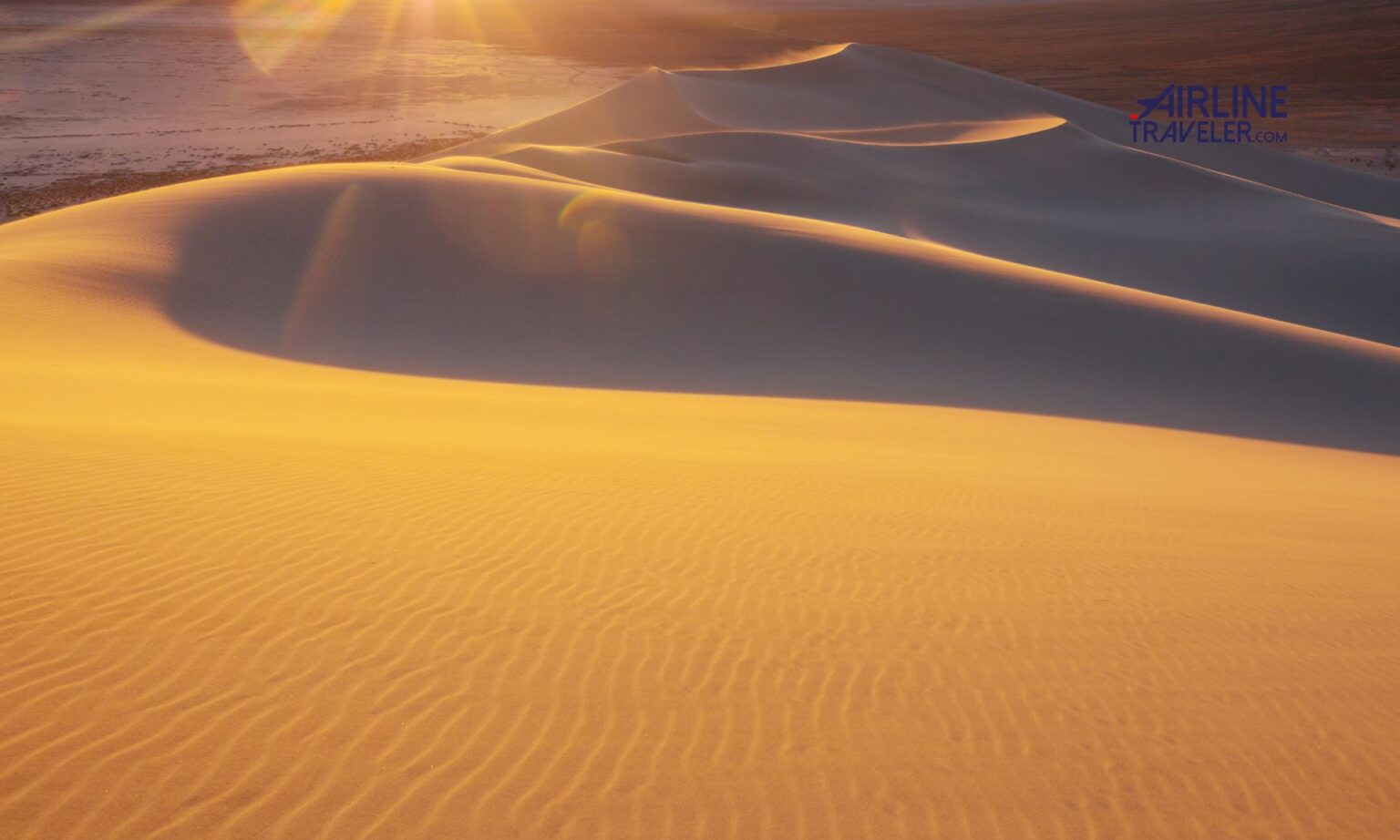Introduction
The United States is home to some truly awe-inspiring sand dunes that offer unique landscapes and thrilling adventures. From the towering dunes of Colorado to the shifting sands of Michigan, these natural wonders provide perfect destinations for exploration and recreation. Here are five jaw-dropping sand dunes in the U.S. that you should add to your travel bucket list.
1. Great Sand Dunes National Park, Colorado
Overview:
Great Sand Dunes National Park and Preserve in southern Colorado features the tallest sand dunes in North America, rising up to 750 feet. The park covers over 30 square miles and offers a stunning and unique desert landscape surrounded by mountains.
Highlights:
– Star Dune: The tallest dune in North America, providing incredible views and a challenging hike to the top.
– Medano Creek: A seasonal stream at the base of the dunes, perfect for splashing and cooling off in the summer months.
– Sandboarding and Sand Sledding: Popular activities on the dunes, offering thrilling descents on the sandy slopes.
– Night Sky: The remote location provides excellent stargazing opportunities, with clear, dark skies.
Perfect For:
Adventure seekers, hikers, families, and stargazers.
2. White Sands National Park, New Mexico
Overview:
White Sands National Park, located in southern New Mexico, is home to the world’s largest gypsum dunefield. The striking white sand dunes cover 275 square miles and create a surreal, otherworldly landscape.
Highlights:
– Alkali Flat Trail: A challenging five-mile loop trail offering stunning views of the gypsum dunes.
-Sledding: The smooth, hard-packed gypsum makes for excellent sledding, a popular activity for visitors.
– Sunset Strolls: Ranger-led walks at sunset provide insights into the unique ecosystem and stunning views as the sun dips below the horizon.
– Photography: The stark white dunes against the blue sky provide endless opportunities for dramatic photos.
Perfect For:
Families, photographers, hikers, and those seeking a unique natural wonder.
3. Sleeping Bear Dunes National Lakeshore, Michigan
Overview:
Located along the northwest coast of Michigan’s Lower Peninsula, Sleeping Bear Dunes National Lakeshore features towering sand dunes that rise dramatically above Lake Michigan. The park covers 35 miles of coastline and offers a mix of forested areas and open dunes.
Highlights:
– Dune Climb: A popular activity, offering a strenuous but rewarding climb up the steep dunes.
– Pierce Stocking Scenic Drive: A 7.4-mile loop drive providing stunning views of the dunes and Lake Michigan.
– Lake Michigan Overlook: Offers breathtaking views of the lake and surrounding dunes from a high vantage point.
– Hiking Trails: Numerous trails wind through the dunes and forests, offering opportunities for exploration and wildlife viewing.
Perfect For:
Families, hikers, nature lovers, and those seeking scenic drives.
READ ALSO: Explore the Outdoors on These Adventurous Summer Trips
4. Oregon Dunes National Recreation Area, Oregon
Overview:
Stretching along the central Oregon coast, the Oregon Dunes National Recreation Area encompasses 40 miles of wind-sculpted sand dunes, some reaching heights of 500 feet. The area offers a diverse range of ecosystems, from sandy dunes to coastal forests.
Highlights:
– OHV Riding: The dunes are a popular destination for off-highway vehicle (OHV) enthusiasts, with designated areas for dune buggies and ATVs.
– Hiking: Trails like the John Dellenback Dunes Trail offer scenic hikes through the dunes and forested areas.
– Camping: Numerous campgrounds provide opportunities to stay close to the dunes and enjoy the coastal environment.
– Wildlife Viewing: The diverse habitats support a variety of wildlife, including birds, deer, and even occasional sightings of gray whales offshore.
Perfect For:
OHV enthusiasts, campers, hikers, and wildlife watchers.
5. Coral Pink Sand Dunes State Park, Utah
Overview:
Coral Pink Sand Dunes State Park in southern Utah is known for its strikingly colored sand dunes, which get their unique pink hue from the erosion of nearby Navajo sandstone cliffs. The park covers 3,730 acres and offers a beautiful and less-crowded alternative to the more famous national parks in the area.
Highlights:
– Off-Roading: The dunes are a popular spot for off-roading, with areas designated for ATVs and dune buggies.
– Hiking and Photography: The vibrant pink dunes provide a stunning backdrop for hikes and photos, particularly at sunrise and sunset.
– Sandboarding: The soft sand and gentle slopes make for fun sandboarding experiences.
– Wildlife: The park is home to various wildlife, including lizards, birds, and the unique Coral Pink Sand Dunes tiger beetle.
Perfect For:
Off-roaders, photographers, hikers, and those seeking a quieter, unique desert landscape.
READ ALSO: Top US Off Road Destinations
Frequently Asked Questions
1. What should I bring when visiting sand dunes?
– Water: Staying hydrated is crucial, especially in desert environments.
– Sun Protection: Sunscreen, hats, and sunglasses to protect against the sun’s rays.
– Appropriate Footwear: Sand can get very hot, so sturdy, closed-toe shoes are recommended.
– Layers: Temperatures can vary greatly between day and night.
– Sandboarding Gear: If planning to sandboard, bring or rent the necessary equipment.
2. Are sand dunes safe to visit?
Yes, but it’s important to take precautions such as staying hydrated, protecting yourself from the sun, and being aware of the terrain. It’s also advisable to check for any specific park rules or warnings.
3. Can you camp at sand dunes?
Many sand dunes, such as those in Great Sand Dunes National Park and Oregon Dunes National Recreation Area, offer camping options. Check with the specific location for details on campgrounds and facilities.
4. What activities can you do at sand dunes?
Popular activities include hiking, sandboarding, sledding, off-roading, wildlife viewing, and photography. Each dune location may offer specific opportunities depending on the terrain and regulations.
5. When is the best time to visit sand dunes?
The best time to visit can vary, but generally, spring and fall offer milder temperatures. Summer can be very hot, while winter may bring cooler temperatures and, in some areas, snow.
Conclusion
The United States boasts some of the most incredible sand dunes in the world, each offering unique landscapes and a variety of activities. Whether you’re seeking the towering dunes of Great Sand Dunes National Park, the surreal beauty of White Sands, the coastal charm of Sleeping Bear Dunes, the diverse ecosystems of Oregon Dunes, or the vibrant colors of Coral Pink Sand Dunes, there’s a sand dune destination to suit every adventurer. Pack your gear, plan your visit, and prepare to be amazed by the natural wonders of these jaw-dropping sand dunes.
In another related article, 5 Best Natural Hot Springs and Why You Should Visit






